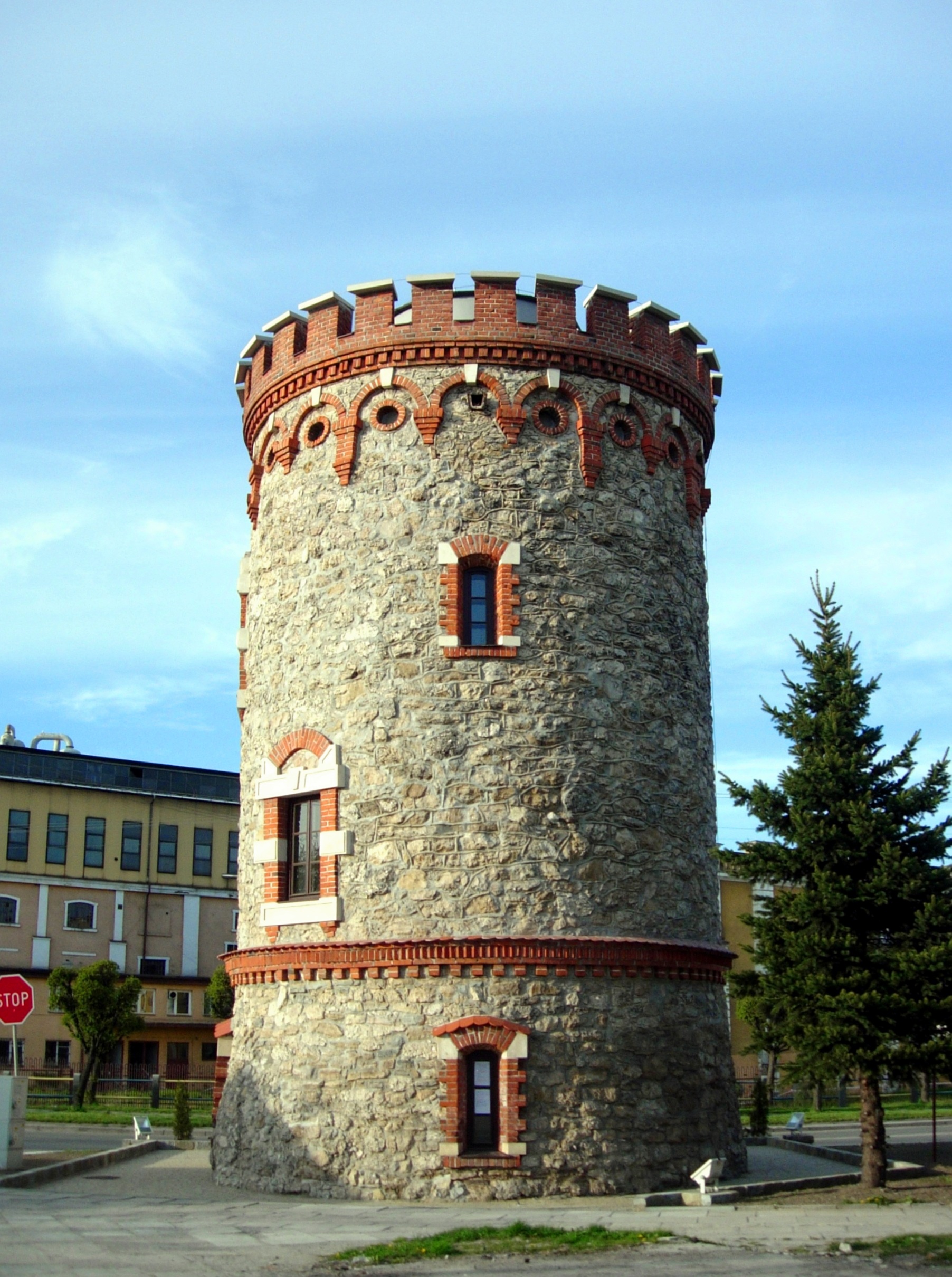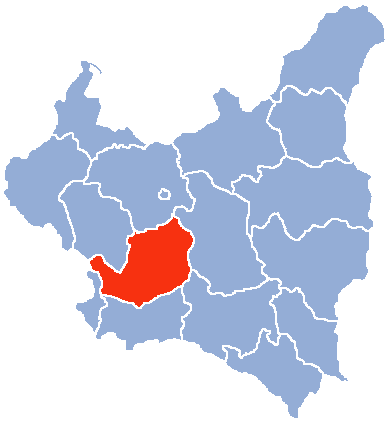|
Kazimierza Wielka
Kazimierza Wielka () is a town in Poland, in Ňöwińôtokrzyskie Voivodeship, about northeast of Krak√≥w. It is the administrative seat of Kazimierza County (''powiat kazimierski''). With a population of 5,848 (2005), it is the smallest county seat in Poland. Kazimierza Wielka is located in Lesser Poland Upland and historically belongs to the province of Lesser Poland. For most of its history, it was a village, and did not receive its town charter until 1959. The first mention of the village dates from 1320 during the reign of Wladyslaw Lokietek. At that time, its name was spelled Cazimiria and it belonged to the Kazimierski family. In the Kingdom of Poland, Kazimierza Wielka was located on the border of two Lesser Poland voivodeships - Sandomierz Voivodeship and Krakow Voivodeship. The village itself belonged to Proszowice County of Krak√≥w Voivodeship, while neighboring Kazimierza Mala belonged to Wislica County of Sandomierz Voivodeship. In the 1560s, Kazimierza Wielka was one ... [...More Info...] [...Related Items...] OR: [Wikipedia] [Google] [Baidu] |
Voivodeships Of Poland
A voivodeship (; pl, województwo ; plural: ) is the highest-level administrative division of Poland, corresponding to a province in many other countries. The term has been in use since the 14th century and is commonly translated into English as "province". The Polish local government reforms adopted in 1998, which went into effect on 1 January 1999, created sixteen new voivodeships. These replaced the 49 former voivodeships that had existed from 1 July 1975, and bear a greater resemblance (in territory, but not in name) to the voivodeships that existed between 1950 and 1975. Today's voivodeships are mostly named after historical and geographical regions, while those prior to 1998 generally took their names from the cities on which they were centered. The new units range in area from under (Opole Voivodeship) to over (Masovian Voivodeship), and in population from nearly one million (Opole Voivodeship) to over five million (Masovian Voivodeship). Administrative authority at th ... [...More Info...] [...Related Items...] OR: [Wikipedia] [Google] [Baidu] |
Cities And Towns In Ňöwińôtokrzyskie Voivodeship
A city is a human settlement of notable size.Goodall, B. (1987) ''The Penguin Dictionary of Human Geography''. London: Penguin.Kuper, A. and Kuper, J., eds (1996) ''The Social Science Encyclopedia''. 2nd edition. London: Routledge. It can be defined as a permanent and Urban density, densely settled place with administratively defined boundaries whose members work primarily on non-agricultural tasks. Cities generally have extensive systems for housing, transportation, sanitation, Public utilities, utilities, land use, Manufacturing, production of goods, and communication. Their density facilitates interaction between people, government organisations and businesses, sometimes benefiting different parties in the process, such as improving efficiency of goods and service distribution. Historically, city-dwellers have been a small proportion of humanity overall, but following two centuries of unprecedented and rapid urbanization, more than half of the world population now lives in cit ... [...More Info...] [...Related Items...] OR: [Wikipedia] [Google] [Baidu] |
Park Kazimierza Wielka Alejka
A park is an area of natural, semi-natural or planted space set aside for human enjoyment and recreation or for the protection of wildlife or natural habitats. Urban parks are green spaces set aside for recreation inside towns and cities. National parks and country parks are green spaces used for recreation in the countryside. State parks and provincial parks are administered by sub-national government states and agencies. Parks may consist of grassy areas, rocks, soil and trees, but may also contain buildings and other artifacts such as monuments, fountains or playground structures. Many parks have fields for playing sports such as baseball and football, and paved areas for games such as basketball. Many parks have trails for walking, biking and other activities. Some parks are built adjacent to bodies of water or watercourses and may comprise a beach or boat dock area. Urban parks often have benches for sitting and may contain picnic tables and barbecue grills. The largest ... [...More Info...] [...Related Items...] OR: [Wikipedia] [Google] [Baidu] |
Kazimierza Wielka 20070421 1810
__NOTOC__ Kazimierza County ( pl, powiat kazimierski) is a unit of territorial administration and local government (powiat) in Ňöwińôtokrzyskie Voivodeship, south-central Poland. It came into being on January 1, 1999, as a result of the Polish local government reforms passed in 1998. Its administrative seat and largest town is Kazimierza Wielka, which lies south of the regional capital Kielce. The only other town in the county is Skalbmierz, lying north-west of Kazimierza Wielka. The county covers an area of . As of 2019 its total population is 33,408, out of which the population of Kazimierza Wielka is 5,550, that of Skalbmierz is 1,285, and the rural population is 26,573. Neighbouring counties Kazimierza County is bordered by PiŇĄcz√≥w County to the north, Busko County to the north-east, DńÖbrowa County to the east, Tarn√≥w County to the south-east, and Proszowice County and Miech√≥w County to the west. Administrative division The county is subdivided into five gmina The g ... [...More Info...] [...Related Items...] OR: [Wikipedia] [Google] [Baidu] |
Buchach
Buchach ( uk, –Ď—É—á–į—á; pl, Buczacz; yi, ◊Ď◊Ę◊ė◊©◊ź÷ł◊ė◊©, Betshotsh or (Bitshotsh); he, ◊Ď◊ē◊¶'◊ź◊•' ''Buch'ach''; german: Butschatsch; tr, BucaŇü) is a city located on the Strypa River (a tributary of the Dniester) in Chortkiv Raion of Ternopil Oblast (province) of Western Ukraine. It hosts the administration of Buchach urban hromada, one of the hromadas of Ukraine. Buchach rests south-east of Lviv, in the historic region of Halychyna (Galicia). The city was located in the Polish‚ÄďLithuanian Commonwealth until the partitions, followed by the Habsburg monarchy (1772‚ÄĒ1804), Austrian empire (1804‚ÄĒ1867), Austro-Hungary (1867‚ÄĒ1918), West Ukrainian People's Republic (1918‚ÄĒ1919), and Poland (1919‚ÄĒ1939). The population was estimated at . History The earliest recorded mention of Buchach is in 1260 by Bartosz Paprocki in his book "Gniazdo Cnoty, zkńÖd herby Rycerstwa Polskiego sw√≥j poczńÖtek majńÖ", Krak√≥w, 1578. The validity of this date was reasonably refuted by ... [...More Info...] [...Related Items...] OR: [Wikipedia] [Google] [Baidu] |
Wehrmacht
The ''Wehrmacht'' (, ) were the unified armed forces of Nazi Germany from 1935 to 1945. It consisted of the ''Heer'' (army), the ''Kriegsmarine'' (navy) and the ''Luftwaffe'' (air force). The designation "''Wehrmacht''" replaced the previously used term and was the manifestation of the Nazi regime's efforts to rearm Germany to a greater extent than the Treaty of Versailles permitted. After the Nazi rise to power in 1933, one of Adolf Hitler's most overt and audacious moves was to establish the ''Wehrmacht'', a modern offensively-capable armed force, fulfilling the Nazi régime's long-term goals of regaining lost territory as well as gaining new territory and dominating its neighbours. This required the reinstatement of conscription and massive investment and defense spending on the arms industry. The ''Wehrmacht'' formed the heart of Germany's politico-military power. In the early part of the Second World War, the ''Wehrmacht'' employed combined arms tactics (close-cover ... [...More Info...] [...Related Items...] OR: [Wikipedia] [Google] [Baidu] |
Kielce Voivodeship
Kielce Voivodeship ( pl, wojew√≥dztwo kieleckie) is a former unit of administrative division and the local government in Poland. It was originally formed during Poland's return to independence in the aftermath of World War One, and recreated within the new Polish borders after the defeat of Nazi Germany in World War Two.Informator Miejski Kielc (2008) Kielce jako stolica regionu.Internet Archive. History 1921-1938 Kielce Voivodeship was a unit of administrative division and local government in Poland in years 1921-1939. Back then, it covered a large chunk of central part of the country, including such cities as Radom, Czńôstochowa and Sosnowiec. On 1 April 1938 its borders changed, see: Territorial changes of Polish Voivodeships on 1 April 1938). After the change, Voivodeship's area was 22,204 square kilometers, with the population of 2,671,000. Between 1 April 1938 - 1 September 1939 it consisted of 18 powiats (counties). These were: * Bńôdzin county, * Czńôstochowa county, * c ... [...More Info...] [...Related Items...] OR: [Wikipedia] [Google] [Baidu] |
Congress Poland
Congress Poland, Congress Kingdom of Poland, or Russian Poland, formally known as the Kingdom of Poland, was a polity created in 1815 by the Congress of Vienna as a semi-autonomous Polish state, a successor to Napoleon's Duchy of Warsaw. It was established when the French ceded a part of Polish territory to the Russian Empire following France's defeat in the Napoleonic Wars. In 1915, during World War I, it was replaced by the German-controlled nominal Regency Kingdom until Poland regained independence in 1918. Following the partitions of Poland at the end of the 18th century, Poland ceased to exist as an independent nation for 123 years. The territory, with its native population, was split between the Habsburg monarchy, the Kingdom of Prussia, and the Russian Empire. After 1804, an equivalent to Congress Poland within the Austrian Empire was the Kingdom of Galicia and Lodomeria, also commonly referred to as "Austrian Poland". The area incorporated into Prussia and subse ... [...More Info...] [...Related Items...] OR: [Wikipedia] [Google] [Baidu] |
Partitions Of Poland
The Partitions of Poland were three partitions of the Polish‚ÄďLithuanian Commonwealth that took place toward the end of the 18th century and ended the existence of the state, resulting in the elimination of sovereign Poland and Lithuania for 123 years. The partitions were conducted by the Habsburg monarchy, the Kingdom of Prussia, and the Russian Empire, which divided up the Commonwealth lands among themselves progressively in the process of territorial seizures and annexations. The First Partition was decided on August 5, 1772 after the Bar Confederation lost the war with Russia. The Second Partition occurred in the aftermath of the Polish‚ÄďRussian War of 1792 and the Targowica Confederation of 1792 when Russian and Prussian troops entered the Commonwealth and the partition treaty was signed during the Grodno Sejm on January 23, 1793 (without Austria). The Third Partition took place on October 24, 1795, in reaction to the unsuccessful Polish KoŇõciuszko Uprising the previ ... [...More Info...] [...Related Items...] OR: [Wikipedia] [Google] [Baidu] |
Sugar Refinery
A sugar refinery is a refinery which processes raw sugar from cane or beets into white refined sugar. Many cane sugar mills produce raw sugar, which is sugar that still contains molasses, giving it more colour (and impurities) than the white sugar which is normally consumed in households and used as an ingredient in soft drinks and foods. While cane sugar does not need refining to be palatable, sugar from sugar beet is almost always refined to remove the strong, usually unwanted, taste of beets from it. The refined sugar produced is more than 99 percent pure sucrose. Many sugar mills only operate during the harvest season, whereas refineries may work the year round. Sugar beet refineries tend to have shorter periods when they process beet than cane refineries, but may store intermediate product and process it in the off-season. Raw sugar is either processed and sold locally, or is exported and refined elsewhere. History Sugar refineries date back to Arab Egypt in the 12th ... [...More Info...] [...Related Items...] OR: [Wikipedia] [Google] [Baidu] |
ŇĀubieŇĄski Family
The ŇĀubieŇĄski family (plural: ŇĀubieŇĄscy; feminine singular: ŇĀubieŇĄska) are Polish nobles who take their name from the village of ŇĀubna-JarosŇāaj near Sieradz, in central Poland. They attained magnate status in the 18th century before the Partitions of Poland. One of their number, the reformer and Minister of Justice during Congress Poland, Felix, received the hereditary title of ''Graf'', from king Frederick Wilhelm III of Prussia in 1796. He and his wife, the writer, Tekla Teresa Lubienska had 60 grandchildren. Thereafter, their relative economic decline was mitigated in part through their vast land holdings, their fertility and their capacity to participate in church, state, military, economic and industrial affairs. They have also made significant contributions in engineering and the arts.ŇĽuchlewska, Teresa (2009). "Henryk ŇĀubieŇĄski (1793‚Äď1883) i jego dziaŇāalnoŇõńá gospodarczo-spoŇāeczna", ''Rocznik ŇĽyrardowski'', 7 / Muzeum Historii Polski, http://mazowsze. ... [...More Info...] [...Related Items...] OR: [Wikipedia] [Google] [Baidu] |




.jpg)


